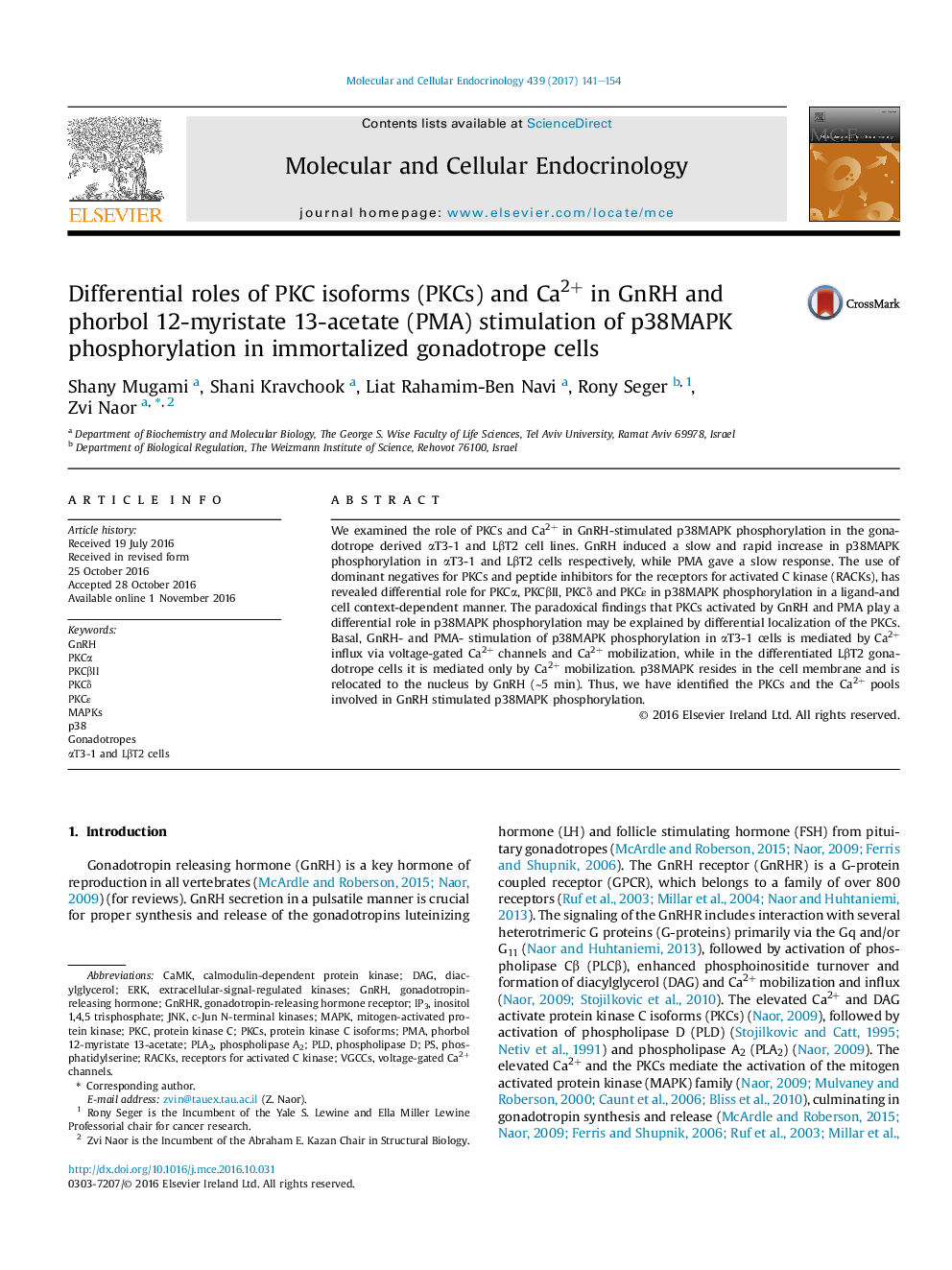| Article ID | Journal | Published Year | Pages | File Type |
|---|---|---|---|---|
| 5534306 | Molecular and Cellular Endocrinology | 2017 | 14 Pages |
â¢GnRH and PMA stimulate p38MAPK phosphorylation in αT3-1 and LβT2 gonadotrope cells.â¢Selective PKCs play a role in p38MAPK phosphorylation in a ligand-and cell context-dependent manner.â¢Different Ca2 pools play a role in p38MAPK phosphorylation in αT3-1 vs. LβT2 cells.
We examined the role of PKCs and Ca2+ in GnRH-stimulated p38MAPK phosphorylation in the gonadotrope derived αT3-1 and LβT2 cell lines. GnRH induced a slow and rapid increase in p38MAPK phosphorylation in αT3-1 and LβT2 cells respectively, while PMA gave a slow response. The use of dominant negatives for PKCs and peptide inhibitors for the receptors for activated C kinase (RACKs), has revealed differential role for PKCα, PKCβII, PKCδ and PKCε in p38MAPK phosphorylation in a ligand-and cell context-dependent manner. The paradoxical findings that PKCs activated by GnRH and PMA play a differential role in p38MAPK phosphorylation may be explained by differential localization of the PKCs. Basal, GnRH- and PMA- stimulation of p38MAPK phosphorylation in αT3-1 cells is mediated by Ca2+ influx via voltage-gated Ca2+ channels and Ca2+ mobilization, while in the differentiated LβT2 gonadotrope cells it is mediated only by Ca2+ mobilization. p38MAPK resides in the cell membrane and is relocated to the nucleus by GnRH (â¼5 min). Thus, we have identified the PKCs and the Ca2+ pools involved in GnRH stimulated p38MAPK phosphorylation.
